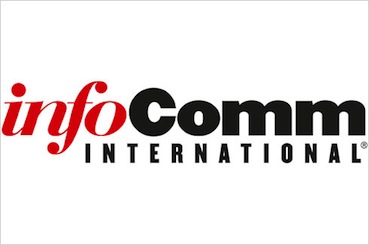It may be in the farthest corner of the North Hall (way out there at N2871), but the IoT Pavilion had a good crowd gathered when the show opened yesterday. A full schedule of presentations had attracted many, and several were making notes about which sessions they planned to attend throughout the show. The roster includes presentations by major brands and bold thought leaders, all of whom will contribute to a larger understanding of how IoT matters to AV.
The IoT Pavilion program, with 20-minute sessions offered on the half-hour every day at the show, has a lot of appeal for those seeking opportunities to add intelligence to systems, either on the back end, with data analytics, or on the front end, with better user interfaces. IoT is about more than simply plugging more things in and making them talk to each other. It’s about building systems that serve clients better while making integrators’ work easier.
“I might just stay here the whole day,” said Dave Thorson, Senior Manager of Programming Architecture for AVI-SPL. He had plans to attend several sessions, and made the wise observation that “IoT is really custom IT.” Which means IT is getting a taste of the AV way of building systems. To reveal more how IoT plays out in the way we work today and how tomorrow looks, a combination of technology outlooks and real-world applications reports will be offered by sponsors such as Crestron, Kramer and various member companies in the IMCCA alliance (including Cisco, Polycom, InFocus and Oblong) and presenters from forward-looking integration firms and futurists already living in an IoT world.
Presentations on the first day included Wearables Research by Ann Hill Duin from the University of Minnesota, who proclaimed that we need to rethink communication in an age where many people are logged in to as many as seven devices at any given moment. “We say ‘bring your own device,’ but it should be ‘wear your own device,’” she noted, asking, “What does that do to communication, privacy and security?” Also related to the human element of IoT, Paul Chavez, Director of Systems of Applications at Harman Professional, had a full house for his presentation on interface design. He advocated a human-centric approach to connecting with technology, describing various displays as “the facial expressions of technologies. If we’re going to be interacting with more things of Internet, we need to design their communications with the visual
cues we’re used to seeing in human interaction.” Today at the IoT Pavilion, the packed roster includes some special sessions by David Bianciardi of AV&C and Neil Redding, a digital space design consultant. Their focus will be on providing ideas and case studies about how we can integrate the Internet-enabled AV technology around us into a digitally engaged habitat that feels comfortable and useful all at once.
